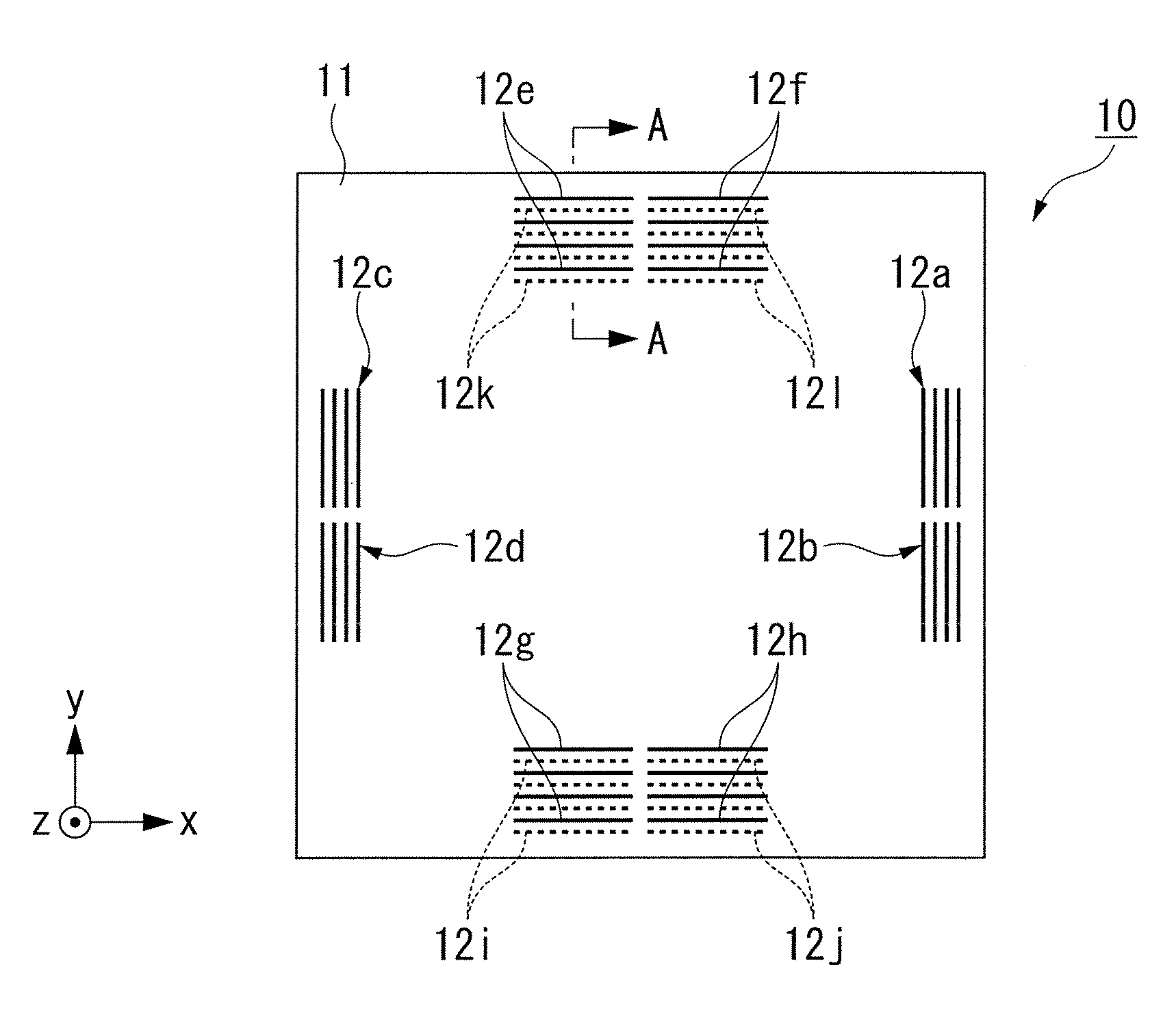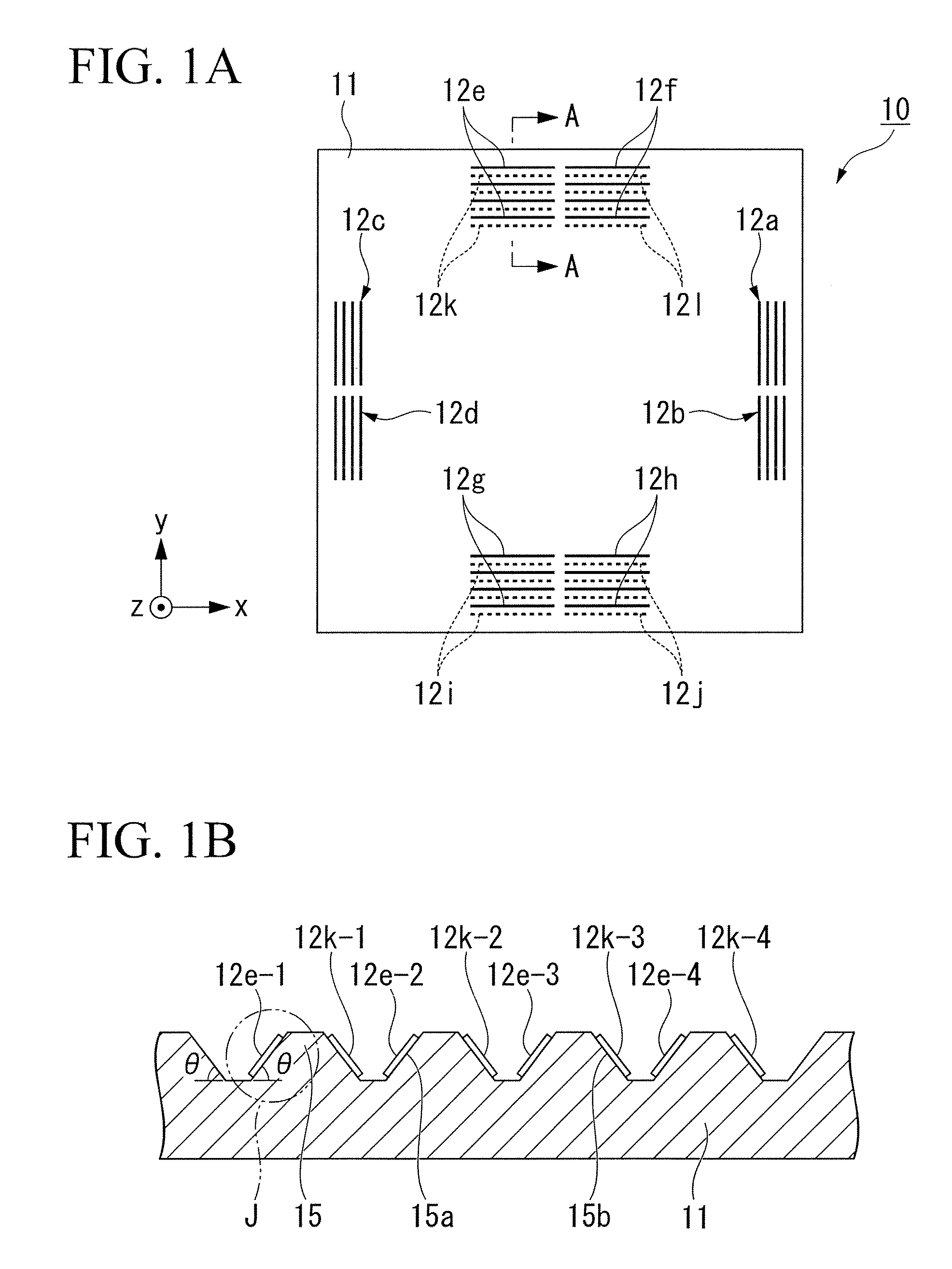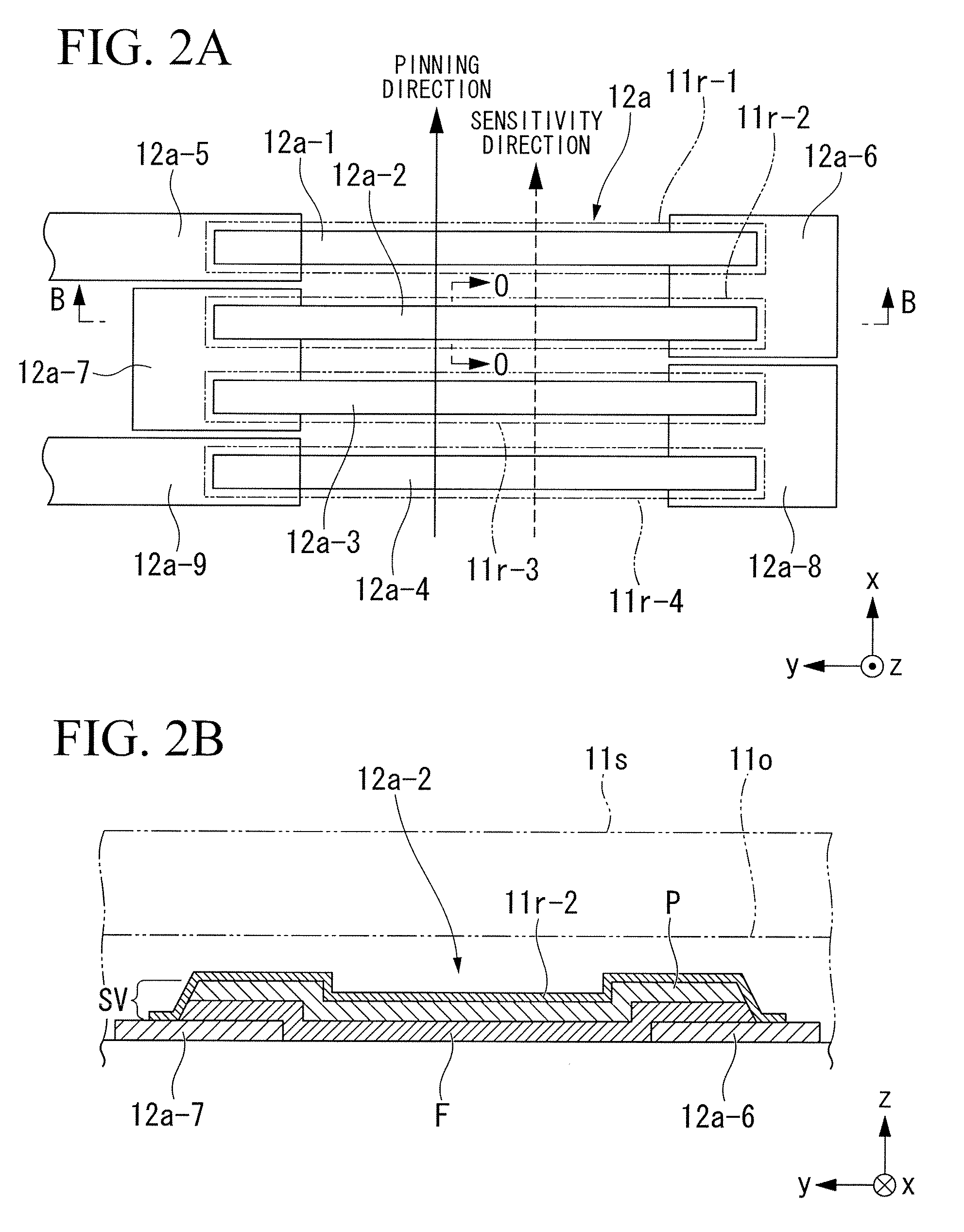Magnetic sensor and manufacturing method therefor
a technology of magnetic sensors and manufacturing methods, applied in the field of magnetic sensors, can solve the problems of weak magnetic characteristics, deformation of protection films, and difficulty in precisely producing resistances based on magnetization directions of free layers, and achieve the effect of superior hysteresis characteristics
- Summary
- Abstract
- Description
- Claims
- Application Information
AI Technical Summary
Benefits of technology
Problems solved by technology
Method used
Image
Examples
Embodiment Construction
[0082]The present invention will be described in further detail by way of examples with reference to the accompanying drawings.
1. Magnetic Sensor
[0083]A three-axial magnetic sensor 10 according to a preferred embodiment of the present invention will be described with reference to FIGS. 1A, 1B, 2A, 2B, 3, 4A, 4B, 4C, 5, 6A, 6B, 7A, 7B, and 7C.
[0084]As shown in FIG. 1A, the three-axial magnetic sensor 10 is produced using a substrate 11 having a square shape in play view (defined by an X-axis and a Y-axis perpendicularly crossing each other) and a prescribed thickness (defined by a Z-axis perpendicular to the X-axis and Y-axis), wherein the substrate 11 is composed of quartz and silicon. In total, twelve GMR components each composed of four GMR bars (denoted by line segments and dotted line segments in FIG. 1A) are formed on the substrate 11. Specifically, there are provided X-axis GMR component 12a to 12d (see line segments drawn along the Y-axis), Y1-axis GMR components 12e to 12h (...
PUM
 Login to View More
Login to View More Abstract
Description
Claims
Application Information
 Login to View More
Login to View More - R&D
- Intellectual Property
- Life Sciences
- Materials
- Tech Scout
- Unparalleled Data Quality
- Higher Quality Content
- 60% Fewer Hallucinations
Browse by: Latest US Patents, China's latest patents, Technical Efficacy Thesaurus, Application Domain, Technology Topic, Popular Technical Reports.
© 2025 PatSnap. All rights reserved.Legal|Privacy policy|Modern Slavery Act Transparency Statement|Sitemap|About US| Contact US: help@patsnap.com



